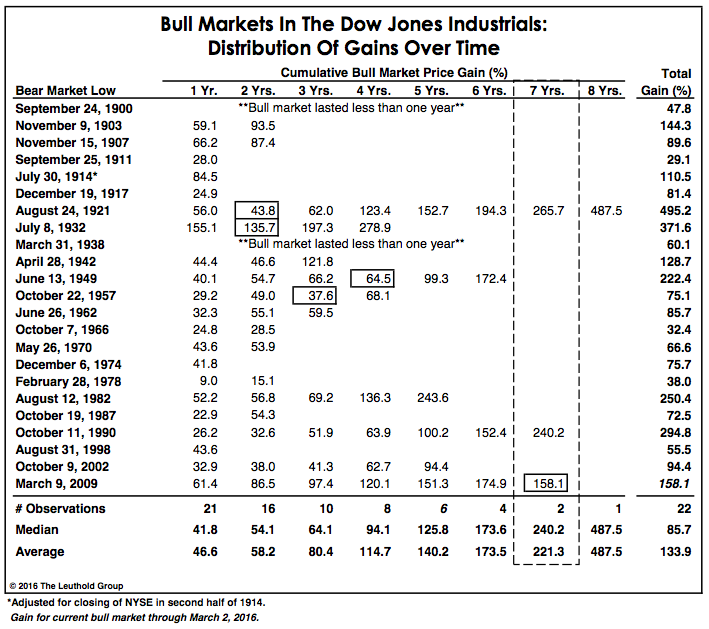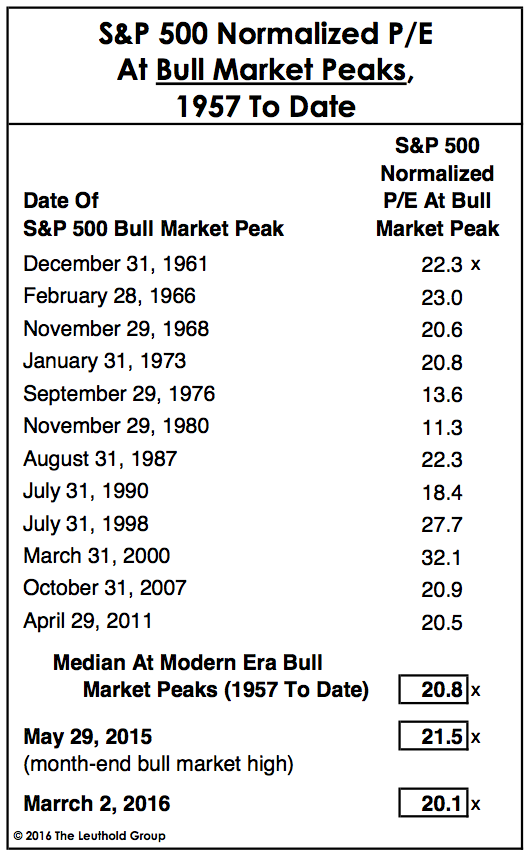Following the Financial Crisis, the stock market stepped into a period of advancement; with this market trend now in its seventh year, CNBC’s Michael Santoli elaborated on how this bull market sizes up to ones in the past.
When compared against all of the stock-market advances since 1928, there have only been two instances of bull market’s longevity extending beyond the current one: 1949–1956 following the war and late 1990 to early 2000.
Santoli is quick to remind, however, that from the unique perspective of inside a bull market (or any other trend for that matter), the comparisons are incomplete, as the definitive characteristics are “only declared and dated in retrospect.”
What Makes A Bull Market
According to Santoli, a bull market is defined as “a 20 percent rise that follows a prior 20 percent loss and ends in another 20 percent decline.”
Therefore, the extent of a market trend cannot be determined until the second 20 percent decline is established.
Why This Time Is Different
The bull market began March 9, 2009, but has since been on a “jarring trip.”
”The S&P 500 reached 1,810 midday Feb. 11 – 15.1 percent below the May 2015 high. If the index falls to 1,707 before eclipsing that 2015 peak, then the end date to the bull market will be reset […] to May 2015,” Santoli explained.
”For months now, many professional observers and traders have been treating this as a bear market in all but official designation, pointing to the carnage in the majority of stocks well below the 20 percent loss threshold and the downward turn in market trackers such as the 200-day average index.”
That being said, the bear market’s entrance cannot be officially announced until the S&P 500 marks a loss of 1/5 its value. Therefore, as Santoli elaborated, “We can evaluate the present environment as a bull market and indeed, quite a battle-scarred one.”
Despite the rollercoaster tales of the tape over the last seven years, there are marked contrasts between the economic and market environment from today and March 9, 2009. Santoli highlighted the unemployment rate, yield on the main junk bond index, S&P 500 operating earnings per share, the P/E multiple, the GDP and total stock market’s value.
- Unemployment: 8.7 percent to current 4.9 percent
- Real U.S. GDP: Up from $14.5 trillion to $16.4 trillion
- Yield On Main Junk Bond Index: Slightly below 9 percent, compared to 21 percent in March 2009
- 12-Months’ S&P 500 Operating EPS: $104 today, $43 in March 2009
- P/E Multiple: 19.2 versus 2009’s 15.7
- Total Value As A Proportion Of GDP: From 61 percent to current 115 percent
A Closer Look
All that being said, Santoli also emphasized, “For as aged and resilient as this bull market has been, though, it has not been especially impressive in terms of its absolute level of appreciation.

Source: The Leuthold Group
”In many respects,” Santoli said, “the climb has been grudging and joyless, pushed ahead by ultra-low official interest rates and pulled along by corporate borrowing, stock buybacks and the zealous defense of company profit margins.

Source: The Leuthold Group
”This leaves us in the same hazy conditions that have enshrouded investors for half a year, in the disputed territory between bull and bear market. The trend has turned hostile and most equity markets around the world have entered or undergone clear bear markets,” Santoli stated.
”The bottom line seems to be: This mature bull market owes investors nothing more, but that doesn’t mean it won’t find ways to show a bit more generosity before it’s through.”
© 2025 Benzinga.com. Benzinga does not provide investment advice. All rights reserved.
Trade confidently with insights and alerts from analyst ratings, free reports and breaking news that affects the stocks you care about.